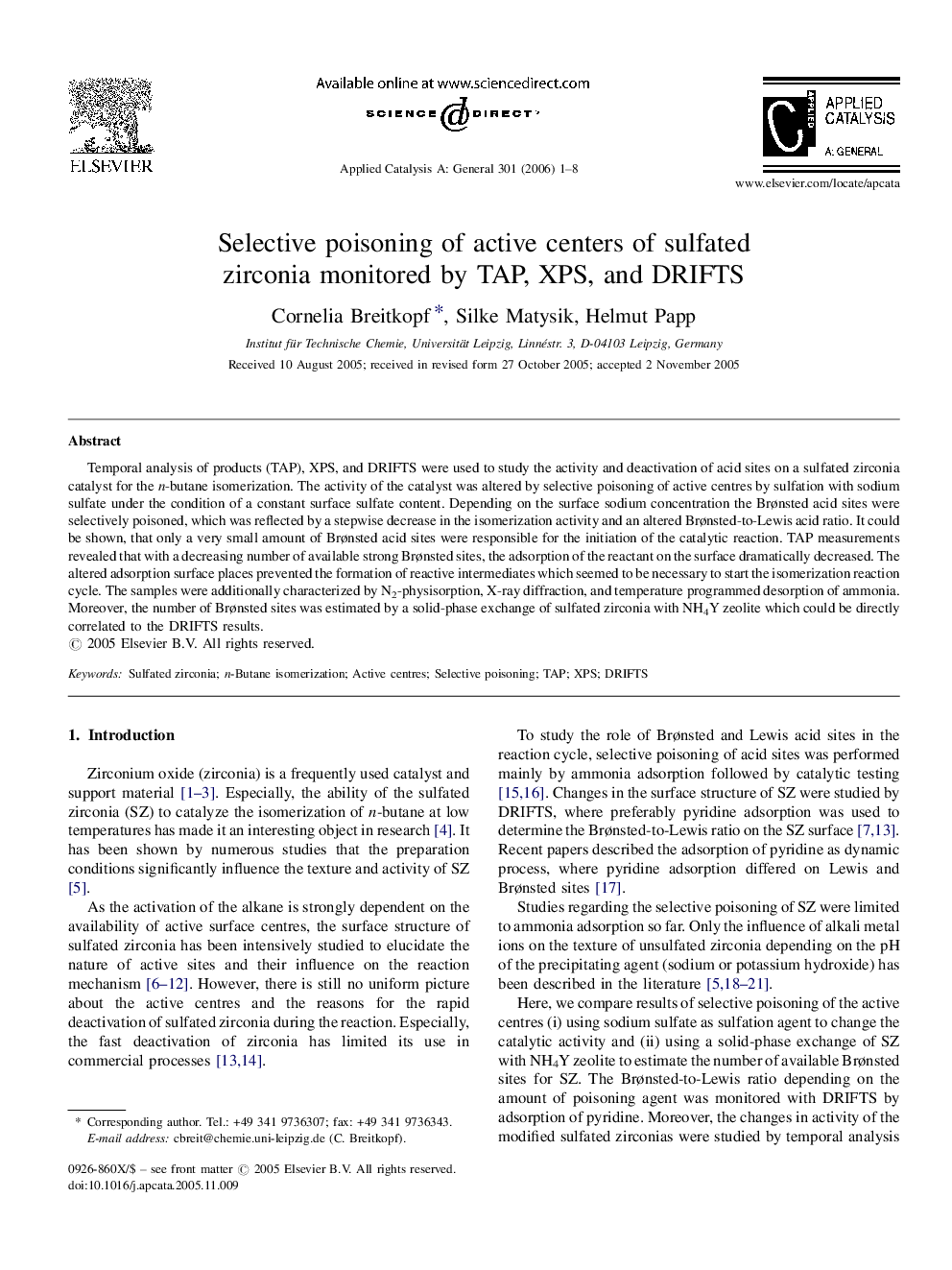| Article ID | Journal | Published Year | Pages | File Type |
|---|---|---|---|---|
| 43946 | Applied Catalysis A: General | 2006 | 8 Pages |
Temporal analysis of products (TAP), XPS, and DRIFTS were used to study the activity and deactivation of acid sites on a sulfated zirconia catalyst for the n-butane isomerization. The activity of the catalyst was altered by selective poisoning of active centres by sulfation with sodium sulfate under the condition of a constant surface sulfate content. Depending on the surface sodium concentration the Brønsted acid sites were selectively poisoned, which was reflected by a stepwise decrease in the isomerization activity and an altered Brønsted-to-Lewis acid ratio. It could be shown, that only a very small amount of Brønsted acid sites were responsible for the initiation of the catalytic reaction. TAP measurements revealed that with a decreasing number of available strong Brønsted sites, the adsorption of the reactant on the surface dramatically decreased. The altered adsorption surface places prevented the formation of reactive intermediates which seemed to be necessary to start the isomerization reaction cycle. The samples were additionally characterized by N2-physisorption, X-ray diffraction, and temperature programmed desorption of ammonia. Moreover, the number of Brønsted sites was estimated by a solid-phase exchange of sulfated zirconia with NH4Y zeolite which could be directly correlated to the DRIFTS results.
